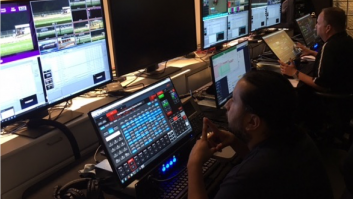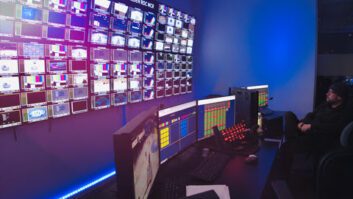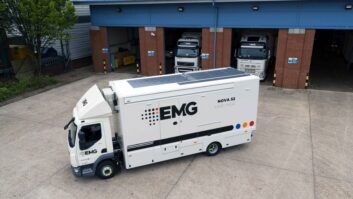Content production and delivery are undergoing a major transformation, with the global pandemic driving new changes both on- and off-set. Between travel restrictions and new safety protocols, the demand for remote workflows is burgeoning, from production through to post. If you’re looking for a simple path to get started with remote collaboration workflows, here are a few guidelines to keep in mind:
- Establish a live video link between crew on- and off-set
Ensuring cast and crew safety is a priority for any production. Producers, editors, agencies and clients may have traditionally gathered in edit suites and viewing rooms to review and sign off material, but now a quick and simple access to a live feed of what’s happening on-set is essential. To connect all of these players virtually to what’s happening, the source audio and video must be compressed and then securely live streamed over public internet, regardless of physical origin. One way to create such a stream is through the use of dedicated live, low-latency streaming tools.
- Spec out video streaming requirements for remote collaboration in advance
It’s important to evaluate an array of streaming solutions, but with a production’s specific needs in mind. Video stream and compression standard flexibility must also be taken into account, as well as security, resolution and the number of camera feeds to be shared. In some cases, a simple standalone streaming tool that converts HDMI or SDI video inputs with embedded audio to the H.264 compression format for display on a range of displays may suffice. Using such a device, a timeline output from the editing suite NLE I/O could be connected via SDI or HDMI and sent to a public CDN like YouTube, Wowzer or Twitch, or a private one. The production and post teams could then use a telephone or video conferencing service for communication, with the video and audio from the timeline available to all via a web browser.
For UltraHD/4K projects, a more sophisticated video transport solution may be necessary. In this case, finding a tool that supports H.265 is ideal. The NLE timeline output would be shared via SDI to the video transport device, which would then convert the output of the timeline to H.265 for streaming to a smart TV in the producer’s viewing room. For image-critical applications, finding a device with JPEG 2000 support might also prove beneficial. When combined with Secure Reliable Transport (SRT), plus encryption, this sort of workflow offers high quality transmission within a secure protocol, and the audio and video feeds can be sent to multiple locations and services all from the same source in real-time.
- Achieve more distance and flexibility with IP
IP is an incredibly beneficial tool in building remote collaboration workflows for production through post. To take advantage of the distance and flexibility it provides, productions can harness an existing IT infrastructure with conversion solutions that allow the use of ethernet cabling to pass uncompressed video and audio. Those tools provide the video transport, reception and decoding in accordance with the SMPTE ST 2110 group of standards, or in some cases SMPTE 2022-6/7. By using a 10GigE network, server and the appropriate conversion tools, baseband video can be carried from the SDI output of an editing system and transmitted without loss via the ethernet network, providing a safe reviewing environment for a producer at another network point in the same building with an IP-enabled receiver. The producer can then communicate with the editor while seeing the timeline and editorial adjustments in real time.
- Don’t underestimate the role of audio and video I/O technology
An IP-based infrastructure provides immense flexibility in promoting safe work spaces with almost no compromise to the workflow itself. One editorial video source can be easily mapped to multiple simultaneous end points within a facility for even more detailed review cycles requiring more than one producer or post staff member. To do this, a powerful and portable I/O solution is ideal, preferably one that is Thunderbolt 3-equipped and offers 10GigE connectivity for conveying SDI or IP from the outset from an NLE. As editorial may have a preferred set of creative applications, it’s also important to select a tool that supports all major editorial software from Apple Final Cut Pro to Avid Media Composer, and Adobe Premiere Pro and After Effects.
Although remote production and review workflows are varied and relatively nascent, they’re evolving rapidly as technology manufacturers around the globe continue to work closely with clients in film, TV and OTT production to deliver new innovations. Now is the time to dive in, learn, experiment and refine these workflows, as now that we’ve seen the efficiencies they bring, there’s no going back.







